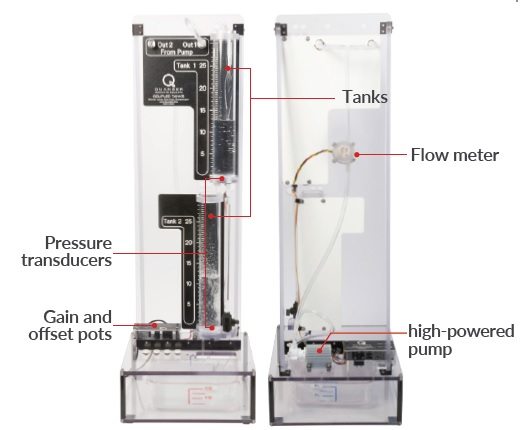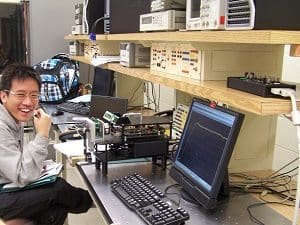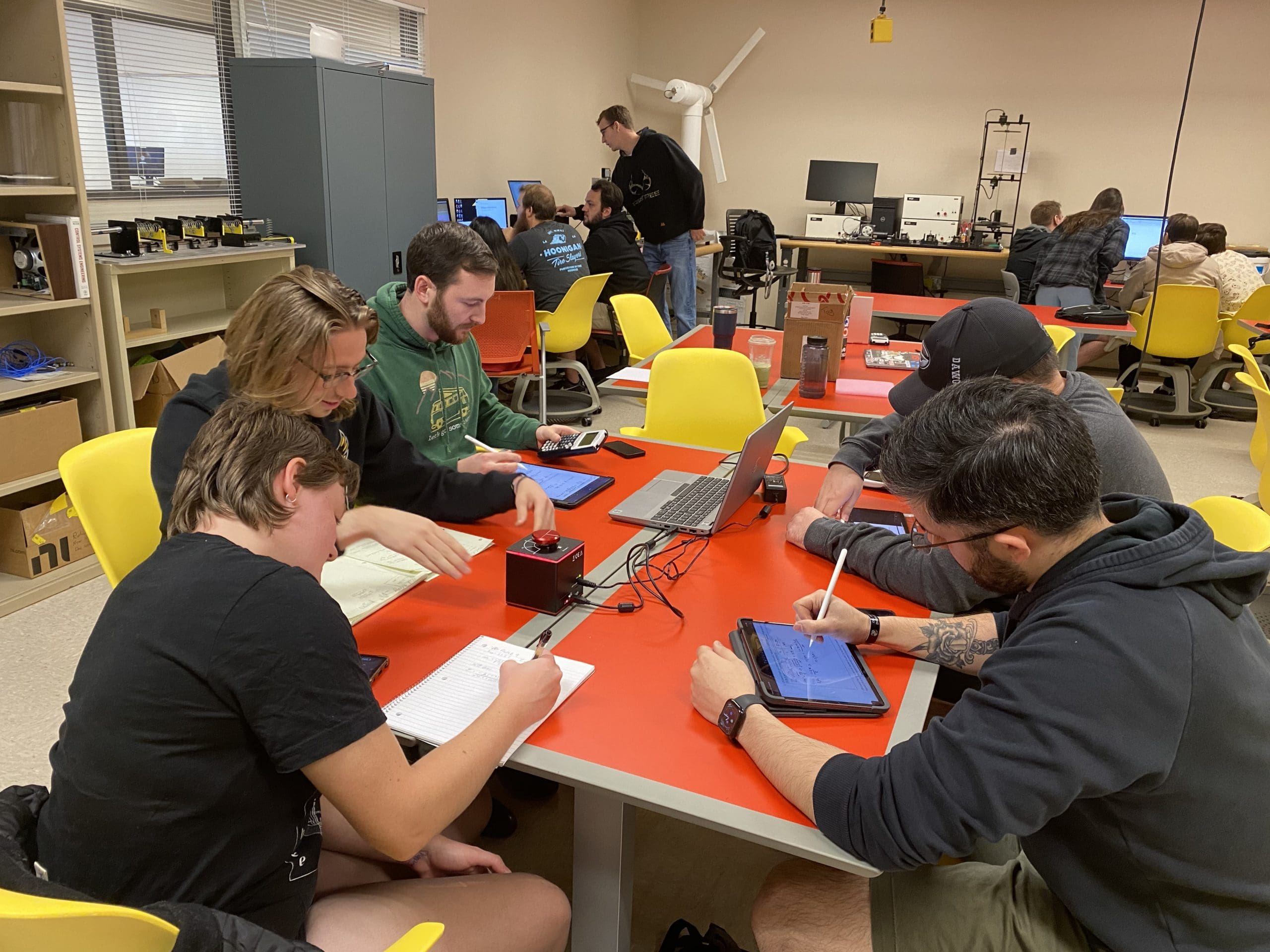
Being one of the youngest engineering schools in Canada, the York University’s Lassonde School of Engineering faces all the challenges typical to building new engineering programs and courses. At the same time, this presents a great opportunity for the faculty to develop truly modern curricula that combine theory with practical applications and employ modern pedagogy, with a goal of better preparing Lassonde’s graduates for the demands of their future engineering careers.
Challenge
Revitalizing an Essential Course
The Instrumentation and Measurement Techniques course (MECH2502) is a great example of a module implementing modern teaching methods, and linking theory to practical, hands-on applications. Inaugurated in 2016, the development of the new sophomore-level Mechanical Engineering course gave the faculty a great opportunity to realize their vision, bring in their experiences from industry, and implement new pedagogical approaches.
The course instructor, Assistant Professor Nima Tabatabaei was highly motivated to design an effective course that would become a flagship within the Mechanical Engineering program. With his field of research heavily involving instrumentation, Dr. Tabatabaei had a very good understanding of what was the most practical knowledge students would need in their future engineering careers. He also had strong support from an industrial partner, Quanser. Quanser engineers were ready to help with the course design, as well as customization of the lab equipment and course materials to meet the objectives and outcomes of the course.
Solution
Modern Course Balancing Theory and Practice
The main focus of the course was to teach the basic concepts of measurement and instrumentation systems. Dr. Tabatabaei and Quanser engineers brainstormed the course structure and decided on a combination of lectures and practical laboratory work.
Focus on Efficient Use of Class Time
 The two-hour per week lecture gave the instructor time to cover the underlying physics and design of measurement systems for various phenomena, fundamentals of instrumentation systems, computerized data acquisition, as well as data presentation strategies and related statistics.
The two-hour per week lecture gave the instructor time to cover the underlying physics and design of measurement systems for various phenomena, fundamentals of instrumentation systems, computerized data acquisition, as well as data presentation strategies and related statistics.
Modern pedagogy was top of mind when preparing the lectures. Dr. Tabatabaei worked closely with the Mechanical Engineering department’s education consultant, Ms. Minha R. Ha to implement multiple techniques aimed at enhancing students’ engagement and learning outcomes. The lectures were designed on a flipped classroom concept, with preassigned mandatory and optional readings and videos to watch. The time in the class could be then dedicated to discussions and more complex concepts that would be difficult for students to master by themselves.
Additionally, Dr. Tabatabaei included in-class demonstrations to show students how theory relates to practical applications. He also created in-class experiments, where students worked with the demonstration units in small groups, measuring, for example, the output of a low-pass filter, and explaining their results using the concepts taught in the lectures. That is also the first example of the experiential learning they were exposed to during the course.
Quanser Experiential Laboratory
To give students a true hands-on experience beyond the classroom demonstrations, Dr. Tabatabaei and Quanser engineers came with the idea of the Quanser Experiential Laboratory, adding a two-hour laboratory session per week to the course.
The lab sessions involved practical measurements and observations which were mapped to the topics covered during the lectures. The open architecture of Quanser equipment allowed students to learn how to read, process, and analyze raw sensor signals and calibrate them to obtain the desired output. Although the equipment was not developed originally for measurement and instrumentation courses, the hardware customization done by Quanser expanded the use of these workstations from classic control experimentation to demonstrating measurement and instrumentation concepts. The customization included adding a new flow sensor to the Coupled Tank system, as well as designing custom experimental setups for temperature measurement, operational amplifiers, and strain measurement.

In addition, two labs were designed and offered toward the end of the course, where students were tasked with developing the signal conditioning electronics (e.g., amplification, filtering, and Wheatstone bridge circuits) from scratch using passive and active electronics. These two labs were specifically intended to provide students with hands-on experience in developing signal conditioning circuits, a skill very much needed for their final projects, and required an application of the knowledge they acquired during the course.
With the input from Dr. Tabatabaei, Quanser engineers also developed a comprehensive measurement and instrumentation laboratory curriculum that fully supported the course learning outcomes. That gave the Lassonde School of Engineering a great return on their investment: the equipment acquired for measurement and instrumentation lab could be shared with other courses and departments focused on classic control topics. and Measurement Techniques course students not only learned fundamental concepts in lectures and got hands-on experience in the labs but, by designing and developing a real-life instrumentation system, they also got to apply their knowledge to solve a practical problem.
Earlier in the semester, Dr. Tabatabei dedicated lecture time for an Idea Generation Workshop, where the faculty and Quanser engineers helped students to come up with feasible ideas for their final project, using infrastructure available in the lab and a small budget of approx. $25 per group. Students were then tasked to produce a short video pitching their idea and submit a project proposal, detailing the project development and timelines. With feedback from their professors and Qunaser engineers, they spent the last two weeks of the course building their systems. At the end, the systems were presented in a conference-type setting and judged by a panel consisting of Lassonde’s Dean, faculty, and Quanser engineers.

Result
Better Course Outcomes, Better Students
The design and development of the Instrumentation and Measurement Techniques course demonstrated how to successfully combine several modern teaching methods:
- basic flipped classroom concept to help students learn the theory more effectively, by allocating the class time to discussions and class demonstrations,
- experiential learning in the labs to give students practical hands-on exposure, and;
- project-based and peer learning during the final project.
As a result, students acquired a better understanding of the theory and could apply their knowledge in new settings and real-life situations.
The course evaluations summed the course experiences from the students’ point of view. Although they ranked the course as one of the more demanding ones, they also recognized and highly valued what they gained during the course. Getting the better grasp of the theory, and being able to connect it to practical applications are some of the outcomes that students mentioned as very important to them. Overall, their experience was extremely good and positive.
Dr. Tabatabei highlighted another valuable course outcome: students learned to program in LabVIEW. He saw LabVIEW as an industry standard tool, but that is not typically taught in depth in school. He was, in fact, having difficulties finding teaching assistants for the course – from about 30 graduate students only two had a solid knowledge of LabVIEW. Now all of Dr. Tabatabaei’s undergraduate students who took his course are well-versed in LabVIEW.
In the Winter Semester 2017, the course was offered for the second time, and the number of registered students has doubled. While this is definitely exciting, this significant increase in class size presents a big challenge, especially for proper implementation of class demonstrations. Quanser engineers are still directly involved, helping to improve the lab materials and fine-tune the content. The whole team behind the successful course is looking forward to the final projects – although this time, they will have to go through twice as many.



